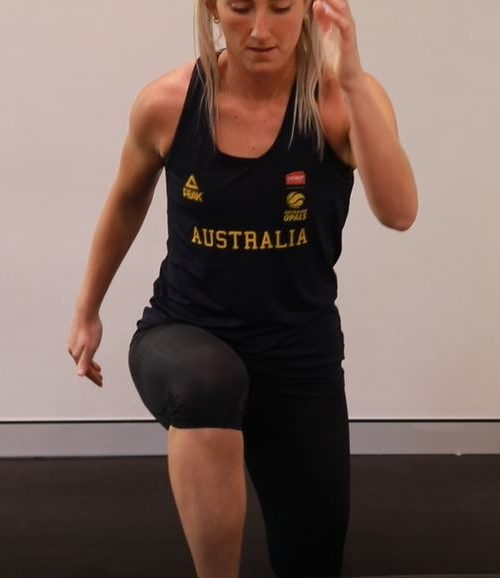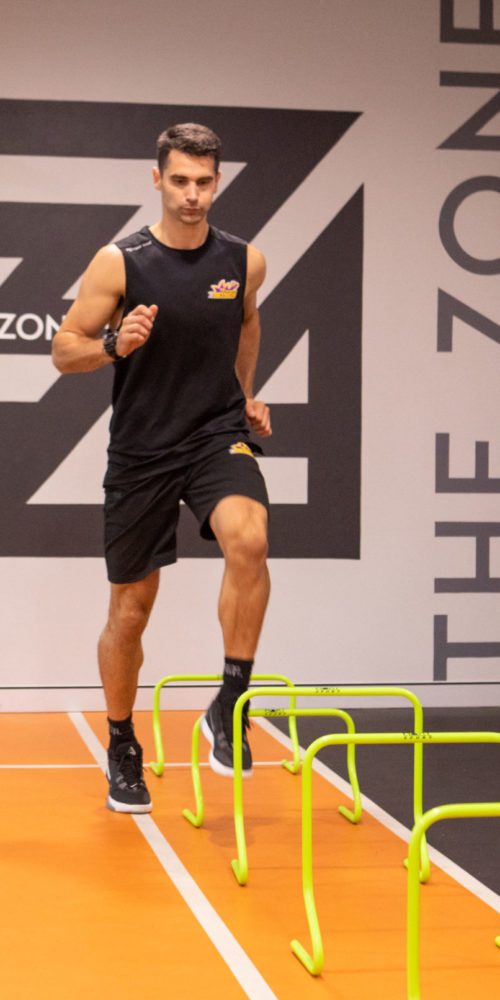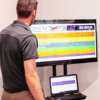Lateral ankle sprains are the most common injury in basketball. Spend enough time around basketball courts and you will see plenty of strapping tape and ankle braces going around!
“I rolled my ankle…”
The typical mechanism is having your ankle sudden turn in (inversion, where the outside of the ankle is stretched out).
This can happen due to poor foot placement when your foot makes contact with the ground, with the muscles unable to dynamically control the joint stability.
Stepping on unexpected surfaces, uneven ground, or another players foot are all other common ways that people can sprain their ankle.
“What have I done?”…
Lots of structures could be injured with what may seem like a straight forward ankle sprain.
Sports and Exercise physiotherapists will be able to assist with a specific diagnosis, to ensure you get started on the most appropriate management plan.
Potential structures injured can include
- Lateral Ligaments (ATFL + CFL)
- Bifurcate ligament
- Peroneal tendon strain
- Avulsion fractures of the Anterior process of calcaneus, or the base of 5th Metatarsal



Initial Management
Control the swelling
- Ice and Compression- consider compression tape or socks!
- Elevate when sitting or lying
- Use ankle taping with a U Foam to compress around the malleolus ( inside and outside ankle bones)
Restore range of motion
- Reduce the swelling ASAP
- Calf Stretches
- Ankle joint mobilisations
- Active exercises, both weight bearing and non weight bearing

REHABILITATION
Restore strength
- Calf raises (progress from 2 to 1 leg, adding range and external loads)
- Target peroneal (eversion) and tib posterior (inversion) strength if needed
- Work the butt – altered gait and movement patterns following an ankle sprain can lead to gluteal weakness.
Balance/proprioception exercises
- Single leg balance – try turning your head, kicking one leg out against elastic, or dribbling or passing a ball, or performing body wraps with a ball.
- Tip toe walks forwards, backwards, sideways. Add an resistance band around your ankles to increase the challenge.
- Practice on unstable surfaces (e.g. BOSU, Wobble board, foam, trampolines)
- Landing practice – jumping or hopping from various heights and directions.
PREVENT FUTURE SPRAINS
- There is evidence to show lateral ankle sprains have an 80% chance of recurrence in the first year if not treated
- Multiple ankle sprains lead to chronic ankle instability and chronic pain
- Balance, proprioception and plyometric exercises are an essential part of any injury risk reduction program
- Ankle taping or bracing have been shown to be effective ways to reduce the likelihood of injuries.
Check out the instruction video on how to tape an ankle here
So if you have sprained you ankle, act on it early. Effective early management will help you return to activity sooner, and a targeted rehabilitation program is the cornerstone of minimising the risk of future ankle injury.
If you live in Sydney, consider booking an appointment with David at Zone 34 in Lewisham to get back in the game. Book Now
Live elsewhere in Australia or overseas? Email david@basketball.physio to arrange a video consultation with David, and develop a thorough return to play plan.
 Return to Play: Hop tests
Return to Play: Hop tests
Return to Play: Hop tests
 Frequency of knee injuries in basketball
Frequency of knee injuries in basketball
Frequency of knee injuries in basketball
 Frequency of Ankle Injuries in Basketball
Frequency of Ankle Injuries in Basketball
Frequency of Ankle Injuries in Basketball
 Lateral ankle sprain
Lateral ankle sprain
Lateral ankle sprain
 Calf strains
Calf strains
Calf strains
 Spanish Squats for patella tendinopathy
Spanish Squats for patella tendinopathy




